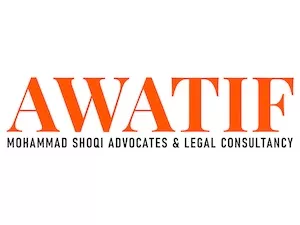Introduction:
In any dynamic economy, financial challenges can arise, leading individuals and businesses to face insolvency. To address these situations and provide a structured outline for resolving them, the UAE enacted Federal Decree-Law No. 19/2019 on Insolvency.
This comprehensive law outlines the rules and procedures governing insolvency, aiming to protect the interests of debtors and creditors alike.
In this article, we will discuss the key aspects of the UAE's insolvency law and what you should know as an individual or business operating within the country.
Defining Insolvency:
Article 1 of the UAE's insolvency law defines insolvency as "facing current or anticipated financial difficulties that render the debtor unable to pay his debts." It means the inability of a debtor to pay its debts when they fall due. This definition applies to both individuals and companies.
The insolvency law emphasizes rehabilitation and recovery mechanisms over liquidation whenever possible. The law aims to protect the interests of debtors and creditors while encouraging business sustainability and financial stability.
- Insolvency Proceedings (Articles 3 and 4): The insolvency law provides for two primary insolvency proceedings:
- Settlement of Financial Obligations: If a debtor is experiencing a financial crisis, they can opt for this negotiating process. This process allows a debtor to initiate negotiations with creditors to reach a mutually agreed settlement and repay debts.
- Insolvency and Liquidation Proceedings: When a settlement is not possible, debtors may have the option to request the court for the opening of insolvency proceedings to seek a solution for their financial difficulties. Insolvency proceedings can be initiated voluntarily by the debtor upon the submission of sufficient documents as per Article 3 of the decree law.
Creditors can also initiate insolvency proceedings if the debtor is unable to meet their obligations. After the submission of the documents, the court may order insolvency and liquidation. Under this proceeding, the debtor's assets are liquidated to repay creditors in a specific order of priority.
- Automatic Stay of Proceedings: As per Article 51, once insolvency proceedings are initiated, all legal actions and executions against the debtor may be automatically suspended, except in cases explicitly permitted by the law.
- The Role of the Expert and Trustee: The court appoints an expert and a trustee to supervise insolvency proceedings. They play a significant role in managing the assets, settling disputes, and ensuring a fair distribution of funds to creditors.
The expert investigates the debtor's assets and liabilities to determine the debtor's true financial condition. The trustees are responsible for the distribution of funds to creditors based on the court's instructions and the provisions of insolvency law.
- Prioritizing Creditors and Preferential Debts: Article 42 of the decree-law establishes a hierarchy of creditors to ensure a systematic approach to debt repayment, with secured creditors taking preference over ordinary creditors because these creditors have collateral to secure their debts. The law also outlines preferential debts, such as judicial expenses and workers' wages.
- Rehabilitation: According to Article 55 of this Decree-Law, debtors who have met specific criteria or have settled their debts may apply for rehabilitation. This provision allows for a fresh start, even after undergoing insolvency proceedings.
Furthermore, any creditor whose debts have been accepted by the court and whose right has not been paid may file an objection to the application with the supporting documents for rehabilitation within fifteen (15) working days from the date of its notification as per Article 60.
- Penalties for Misconduct: Under Article 65 of the decree-law, any creditor who commits certain actions, such as filing fabricated debts or imposing additional debts on the debtor unlawfully, causing losses to creditors during insolvency proceedings, may face punishment, including imprisonment and a fine ranging from AED 10,000 to AED 100,000, or both.
Similarly, a penalty of imprisonment for a period not exceeding 2 years and a fine ranging from AED 20,000 to AED 60,000, or both, may be imposed on anyone who was declared insolvent and it is proved that such insolvency declaration has caused a loss to his creditors, as a result of the following acts following the law under Article 66.
- Suspension of Criminal Cases: Article 67 of the decree law states that if the debtor obtains a court decision to settle their obligation against the creditor, during any stage of the proceedings for settlement of financial obligations or the insolvency and liquidation proceedings, the debtor may request the competent court to hear the criminal case following the provisions of Article 401 of the UAE Penal Code, to issue a decision to terminate the criminal case or stay its execution, as the case may be.
- Transparency and Record-Keeping: The UAE Insolvency law emphasizes transparency in insolvency proceedings and requires comprehensive records of financial transactions and court decisions to be maintained throughout the process.
Conclusion:
Understanding the provisions of the UAE Insolvency Law, such as the different types of proceedings, the role of experts and trustees, and the protections it offers, is essential for anyone operating within the UAE. Whether you are a debtor or a creditor, this law aims to provide a fair and transparent process for resolving financial difficulties.
The content of this article is intended to provide a general guide to the subject matter. Specialist advice should be sought about your specific circumstances.

